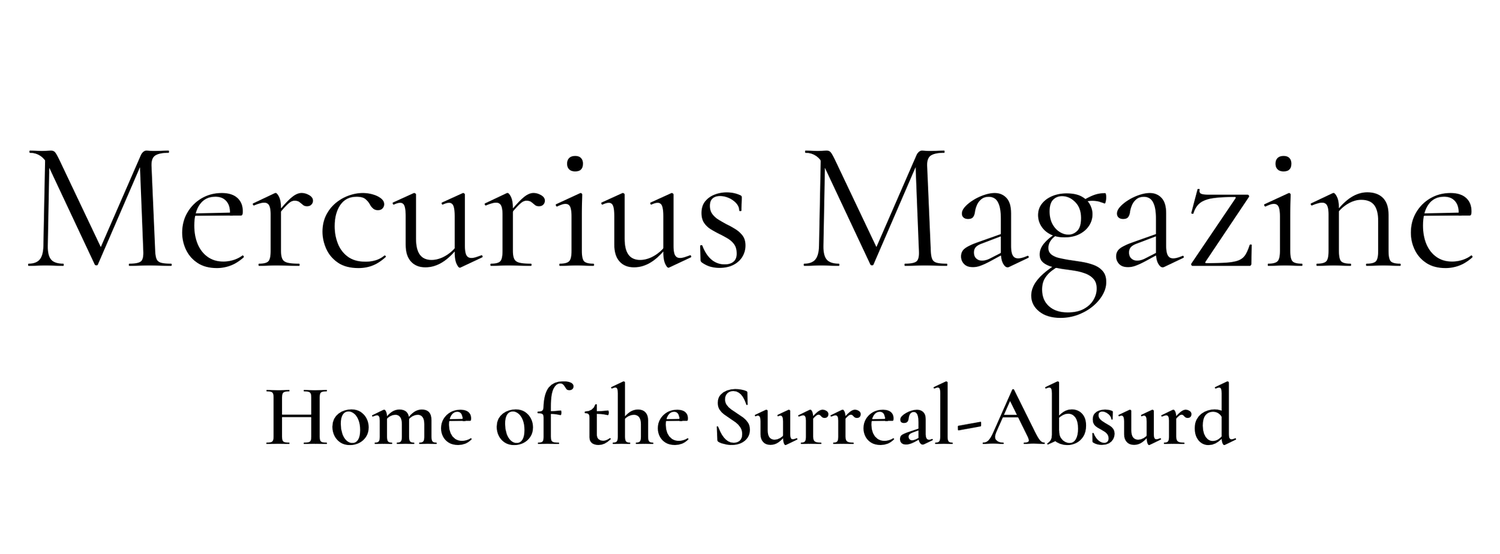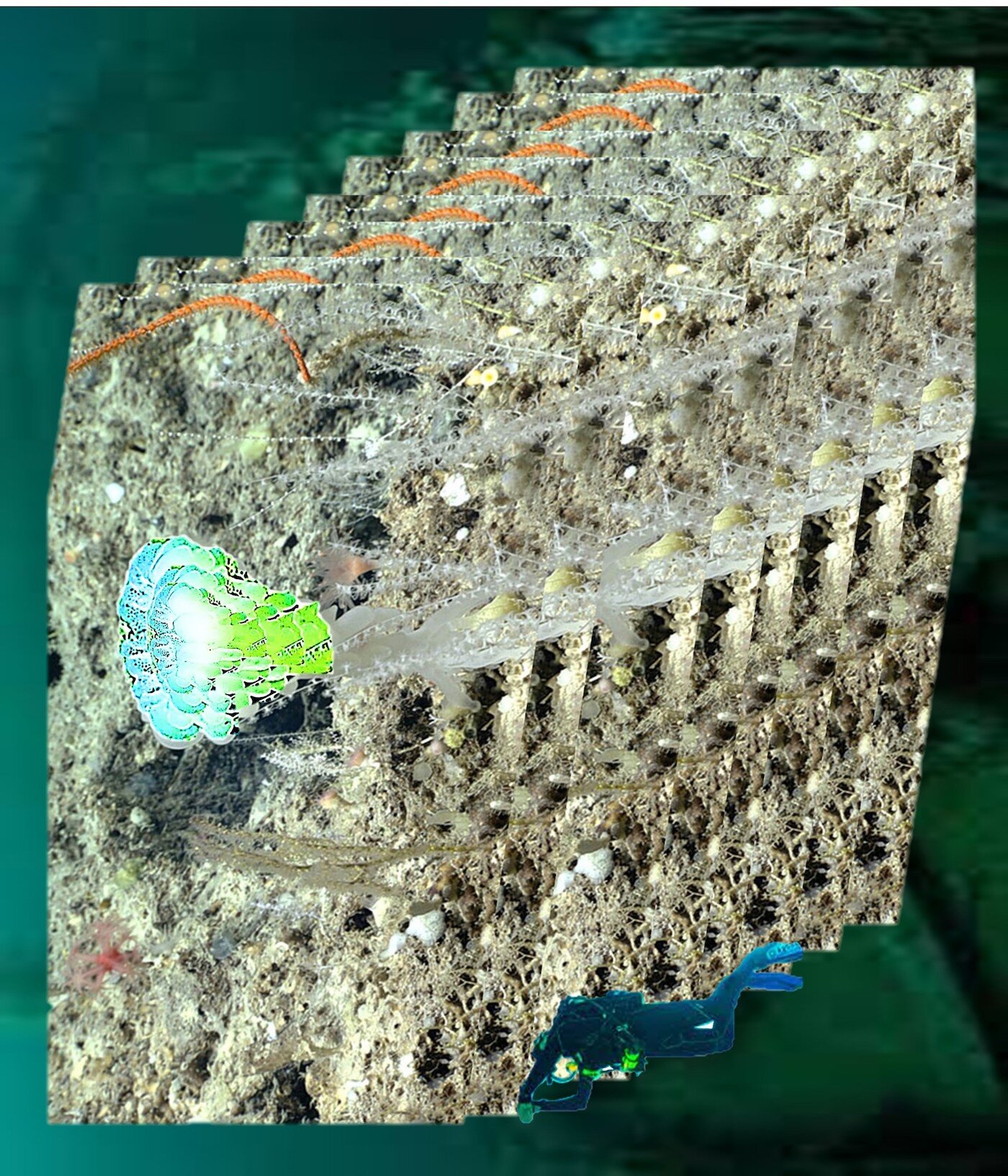Surreal-Absurd Sampler David Greenslade
“During lockdown I explored the idea of immobility -- especially the sessile animal known as the sponge. I began to think of myself as a sessile being. I have written a number of prose poems about imaginary sponges with illustrations. The words and images are a blend of invention and fact.” - David Greenslade
Deathlily
That the ocean floor is full of mystery is hardly news, yet the imagined nature of its many secrets changes over the years. No longer feared as a world of monsters, recent interest in sponges and their subaqueous contribution to the surface world reconceptualises the enigmatic ocean as a resource that transformed the entire planet, notably the gift of oxygen. This deathlily sponge is shown against a background of racing basket fans on the Rockall Shelf.
Moon Sponges
Perspective is the key to making the moon sponge seem flat and round. While globular overall this sponge like all others is marvellously asymmetrical. There are lumps, bumps, troughs, depths, pleats, grooves, furrows and peaks. Divers can fully extend their arm into the waving folds. Unlike many sponges the moon sponge has no symbiotic partner other than the Berring Sea rock on which it stands. Despite limited nutrients, moon sponges can grow to be the size of an average family car.
The Plain Paper Sponge
The so-called plain paper sponge is not that plain. Like all sponges it is composed of tiny cells constantly filtering thousands of litres of water per minute. The colour details of this sponge arise from elements in the eco-habitat that over time give each example its own prismatic quality. Many plain paper varieties are blue, some are red, others are quite repulsively veined with a lurid, spectral purple, resembling gangrene – it very much depends. The most spectacular plain paper sponges are found in the Sargasso Sea. The example shows a diver visiting a plain paper sponge at Ambergis Caye, Belize.
The Birdy Toe
So called because of the way they are seen from above in clear waters. Birdy toes are some of the biggest sponges in the ocean and the largest specimens are found in Papahānaumokuākea Marine National Monument (Hawaii). Birdy Toes actually grow as upright, swaying funnels, it is the perspective of the dive that makes them look like chicken feet. Birdy Toes are often home to crustaceans such as, Splendour Mantis and the Shrill Mantis.
David Greenslade divides his time between Wales and Romania, and writes in Welsh and English. He has work in the current edition of Peculiar Mormyrid and Survision. Among his collections are Rarely Pretty Reasonable (Dark Windows Press Press, 2013) and Homuncular Misfit (P S Avallon, 2011). His new collection Full Pareidolia is forthcoming from CONTRABAND Books, and two other collections are due from Romanian publishers.




